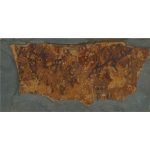Introduction
The allure of Spanish-style architecture has captivated people around the world for centuries. With its distinctive charm, earthy tones, and intricate details, this style evokes a sense of warmth and tradition that is both inviting and timeless. One key element that plays a significant role in achieving the authentic look of Spanish architecture is the use of cultured stone. In this article, we will delve into the world of Spanish-style cultured stone, exploring its history, characteristics, applications, and the enduring appeal it brings to modern architectural designs.
History of Spanish-Style Cultured Stone
The roots of Spanish-style architecture can be traced back to the early settlers who arrived in the Americas from Spain in the 16th century. Influenced by the architectural styles of their homeland, these settlers incorporated elements such as stucco walls, terracotta roof tiles, and intricate wrought-iron details into their buildings. Over time, these architectural features evolved into what is now recognized as Spanish Colonial architecture.
Cultured stone, also known as manufactured stone or faux stone, emerged as a cost-effective alternative to natural stone in the mid-20th century. By replicating the look and texture of natural stone through molds and pigments, cultured stone offered a more affordable and versatile option for creating the intricate facades and accents characteristic of Spanish-style architecture. Today, Spanish-style cultured stone continues to be a popular choice for homeowners, builders, and designers seeking to capture the timeless elegance of this architectural style.
Characteristics of Spanish-Style Cultured Stone
Spanish-style cultured stone is characterized by its warm earth tones, rough textures, and intricate detailing. These stones are designed to mimic the appearance of natural materials such as limestone, sandstone, and granite, while offering the durability and versatility of manufactured stone. Key features of Spanish-style cultured stone include:
1. Warm Earth Tones: Spanish-style architecture is known for its warm color palette, which includes shades of terracotta, ochre, and sienna. Cultured stone products are available in a range of earth tones that capture the rich, sunbaked hues of traditional Spanish buildings.
2. Rough Textures: To recreate the rustic look of natural stone, Spanish-style cultured stone often features rough textures and irregular shapes. These imperfections add depth and character to the facade, creating a sense of authenticity and age.
3. Intricate Detailing: Spanish architecture is renowned for its intricate detailing, from decorative carvings to ornate moldings. Cultured stone products can be customized to replicate these intricate details, allowing for a high level of customization in architectural design.
Applications of Spanish-Style Cultured Stone
Spanish-style cultured stone can be used in a variety of architectural applications to enhance the beauty and authenticity of a building. Some common uses of Spanish-style cultured stone include:
1. Exterior Facades: One of the most popular applications of Spanish-style cultured stone is in exterior facades. By cladding the exterior walls of a building with cultured stone, designers can create the look of a traditional Spanish villa or hacienda, complete with arched doorways, wrought-iron accents, and terracotta roof tiles.
2. Accent Walls: Cultured stone can also be used to create striking accent walls that add visual interest and depth to a space. Whether used in a living room, dining room, or outdoor patio, Spanish-style cultured stone can transform a plain wall into a focal point that evokes the charm of a Mediterranean villa.
3. Fireplaces and Chimneys: The warm, rustic look of Spanish-style cultured stone is well-suited for use in fireplaces and chimneys. Whether used to surround a fireplace hearth or clad a chimney stack, cultured stone can bring a touch of old-world elegance to any interior or exterior space.

4. Outdoor Living Spaces: Spanish-style cultured stone is a popular choice for enhancing outdoor living spaces such as patios, courtyards, and pool surrounds. By incorporating Roofing Slate For Sale , archways, and columns, designers can create a seamless transition between indoor and outdoor areas, evoking the tranquil ambiance of a Spanish retreat.
The Enduring Appeal of Spanish-Style Cultured Stone
The enduring appeal of Spanish-style cultured stone lies in its ability to capture the essence of a bygone era while offering the practical benefits of modern construction materials. Whether used in a residential home, commercial building, or landscape design, Spanish-style cultured stone adds a touch of elegance and authenticity that resonates with people of all ages and backgrounds.
In a world where trends come and go, the timeless charm of Spanish-style architecture continues to inspire architects, designers, and homeowners seeking to create spaces that are both beautiful and functional. By incorporating Spanish-style cultured stone into their designs, they can achieve the look of a Mediterranean villa, a Spanish hacienda, or a rustic farmhouse with a level of authenticity that is unmatched by other building materials.
Conclusion
Spanish-style cultured stone embodies the rich history, intricate craftsmanship, and warm elegance of traditional Spanish architecture. With its warm earth tones, rough textures, and intricate detailing, this versatile building material offers a cost-effective and durable alternative to natural stone, allowing designers to create stunning facades, accent walls, and outdoor living spaces that evoke the timeless charm of the Mediterranean. Whether used in a residential home, commercial building, or landscape design, Spanish-style cultured stone continues to captivate and inspire those who appreciate the beauty of old-world architecture in a modern context.
